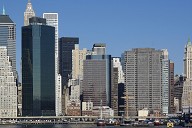400-ton Pendulum in the Onion
In Baku, the capital of Azerbaijan, the tallest building in the Caucasus was built. The 277-m high Baku Tower is constantly subjected to enormous wind loads. For this reason, a 400-t pendulum damper was installed on the uppermost platform. Its special feature: in case of strong wind and earthquake, the 400-t mass block moves horizontally by up to 1.3 m in all directions in a controlled manner. This pendulum damper ensures living and working comfort and effectively reduces the strain on the structure. The mass block consists of a massive steel box that was filled with concrete on site. MAURER not only manufactured the steel construction but also supervised the entire assembly and put the vibration damper into operation
Media
Block of concrete and steel used to damp vibrations in the Baku Tower
The Baku Tower features 49 above-ground floors plus roof and observation platform and is mainly intended for providing office space. In addition, stores, a VIP nightclub, an upscale restaurant, a fitness and spa center as well as an observation platform, the highest in Azerbaijan, are envisaged. Eyecatchers are an oriental-style 3 D steel decoration element stretching 50 meters upwards from the bottom of the tower, and the tower cap that remotely reminds of baroque-style onion domes. The Turkish architect Eren Yorulmazer with his office Mazeron Mimarlik Dekorasyon Tekstil Tic A.S. was in charge of these tasks. A special video and lighting system is intended to impressively illuminate both tower and decoration element and to display videos on the façade.
Challenged by wind
The name Baku (city of the wind) already points to the challenge in high-rise building. The capital of Azerbaijan is situated at the Caspian Sea from where the wind blows unrestrained every day more or less strongly.
A vibration expertise calculated an acceleration of 13 milli-g for a wind load occurring at least once a year. The comfort zone, however, ends at approx. 10 milli-g. The wind experts suggested a TMD (Tuned Mass Damper) as a solution, the 400-ton mass of which consists of a steel box weighing 180 tons and 220 tons of concreted filled in on site. Therefore, the complete construction had to be performed and adapted in such a manner that quick assembly and safe filling at a height of 220 m were rendered possible. The manufacturer had to ensure safety and proper function since comfort was given highest priority to prevent the people in the tower from getting “seasick” because of the vibrations.
The solution was found in the SOCAR tower, nearly 1,400 m as the crow flies away from the Baku Tower. “There, we successfully installed a 450-t TMD in 2014, this being the reason that the building owner contacted us“, reports project manager Dipl.-Ing. Peter Huber from MAURER. The design was optimized in terms of technology and cost effectiveness in consultation with the wind experts. “The biggest challenge was to optimize the system technically and economically and to obtain approval for the changes from all stakeholders.”
Strong steel box for the cast-in-situ concrete
The basic planning for the steel box plus cast-in-situ concrete was not allowed to be altered since that would have rendered the entire preparatory work of the experts obsolete. However, liquid concrete in a box exerts considerable pressure on the surfaces of the steel box, which therefore had to be very stiff and stable. MAURER modified the planning in order to make that technically possible. The steel box, featuring several individual chambers, now weighs 180 t. It was manufactured in Munich, rigged up at the plant on a trial basis and – including cable suspension – tested as a pendulum beforehand. In this way, problems during final assembly at a height of 220 m could be avoided and the fitters were able to perform a test run of the assembly.
Challenging assembly
15 trucks transported the approx. 500 individual components to Baku. The assembly on site was an ordeal: the parts had to be lifted slowly to a height of approx. 220 m, standing clear of the façade by 10–15 m. Each crane load with individual components weighing up to 12 t took an hour and a half. Swaying already started at minor wind loads, therefore mostly the lee side was used. Work was rendered impossible for one or two days a week due to too strong wind, partly that strong that nobody could stay on the platform – despite of brilliant sunshine. This caused the installation to last approx. five weeks in June/July 2018.
Fully locked cables
The planned pendulum cables for the suspension of the 400-t box were optimized as well. For this task, MAURER cooperated with FATZER AG. The Swiss company manufactured, among other things, the cables for the new Zugspitze cable car, so-called fully locked steel cables. These coiled cables feature several layers with intertwined Z-profile wires, resulting in a smooth and locked cable surface, considerably increased sturdiness, and higher corrosion resistance. With a diameter of 70 mm, the pendulum cables are relatively thin; however, they have an enormous load-bearing capacity and reserves.
The mass block in the Baku tower has four suspensions with three cables each, that makes 12 cables in total. This construction features a considerable redundancy for safety reasons, in terms of figures four cables would have sufficed. However, it had to be avoided by all means that the 400-t mass plummets and breaks through the ceilings.
Concrete filled in on site
When the mass box was properly suspended, 220 t of concrete were pumped up and filled in: during a 2-month period. Experts might ask why concrete was chosen as a mass instead of steel plates. “There would have been no considerable difference in costs,“ confirms Huber. “However, in terms of ecological balance, the concrete filled in on site proved to be more favorable and easy assembly. This was particularly important to the building owner.“
Vibration test and alignment to the eigenfrequency
Basically, a TMD only works if its vibration frequency is exactly aligned to the eigenfrequency of the structure. To this end, the tower’s eigenfrequency was measured and the TMD aligned thereto in summer 2018 when the tower was essentially completed. The setting was made via the cables that had to be “elongated”. For this purpose, a mechanical clamping device, a so-called tuning block, was used which could easily be moved downward at the steel box so that the free pendulum length at the top was elongated thus slowing down the vibration of the pendulum.
The 400-t pendulum TMD now reduces the accelerations to 7 milli-g, which is considerably less than the required 10 milli-g.
Seismic hydraulic dampers
After the vibration test, a total of ten hydraulic dampers were docked. They are attached diagonally all around the mass block and are intended to limit the pendulum deflection to max. 1.3 m with stronger load cases. Here, it is not about the winds mentioned above – they cause amplitudes of up to approx. 1 m – but mainly about earthquakes. For a 1,500-year earthquake, an amplitude of 3–4 m was calculated, which had to be limited to ensure that the pendulum mass does not damage the building.
The hydraulic dampers respond speed-dependent: in case of small pendulum movements (wind) they hardly respond at all, while heavy impacts (hurricane, earthquake) trigger a strong response. All hydraulic dampers were individually tested by Ruhr-Universität Bochum to prove the damping properties required by the building owner.
As a side effect, the TMD reduces seismic impacts by 10–15 % in total. However, this does not sufficiently stabilize the tower since the 400-t mass – related to the dimensions of the building – is not capable of converting a sufficient amount of energy from the structure. This is why Buckling Restrained Braces (BRB) were installed as additional seismic protection.
The Baku Tower is scheduled for opening in 2021. For being awarded the contract, in the end it was crucial that MAURER was not only able to plan and manufacture this complex project with its mixture of steel construction and mechanical engineering but also to install and adapt it to the conditions of the structure. “To ensure this, we have coordinated, supported and supervised the installation phase that lasted several months through three of our own specialists on site. The number of about 500 individual parts requires meticulous and appropriate connections of the components,” explains Huber. “In the end, we delivered a fully functional and perfectly adapted component from one single source to the building owner.”
References
Structure Types
- About this
data sheet - Product-ID
7671 - Published on:
09/06/2020 - Last updated on:
11/06/2020

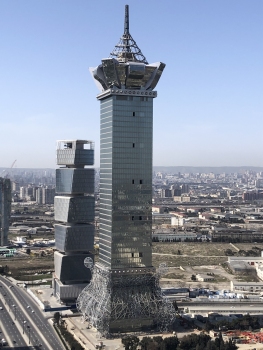
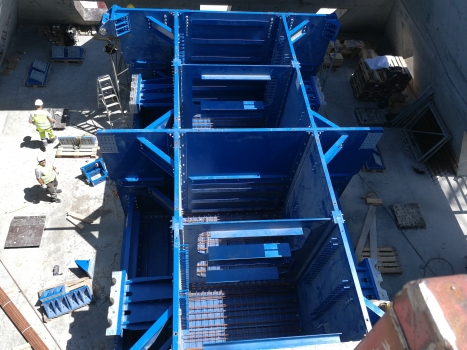
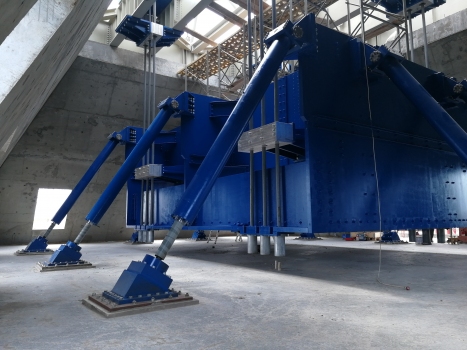
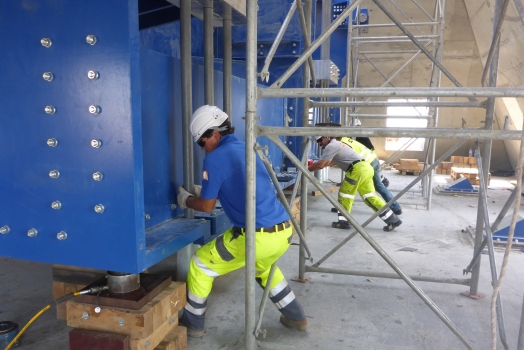
 MAURER SE
MAURER SE 
